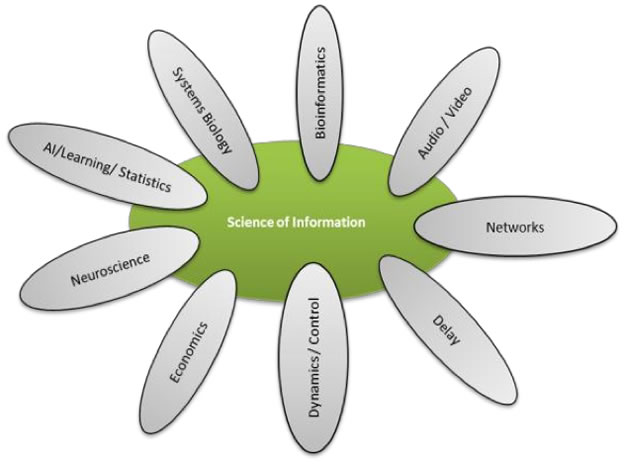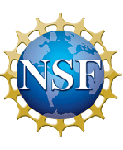-
Overview
-
Our mission is to advance science, technology through a new quantitative understanding of the representation, the communication, and processing of information in biological, physical, social, and engineered systems.
-
Mission for Integrated Research: Create a shared intellectual space, integral to the Center's activities, providing a collaborative research environment that crosses disciplinary and institutional boundaries.
Information provides the essential substrate and unifying theme for virtually all complex interacting systems and supporting intelligent agents-based inference, referred to as artificial intelligence. This is well-recognized in the context of various applications, more notably, in life sciences, modern communication, physical systems, social and financial systems, critical infrastructure systems such as nuclear reactors, electric grid, and economics, to mention a few. Understanding information flow, therefore, holds the key to comprehending and building intelligent agents for more efficient systems design, development and deployment and operation. In view of this, the Center focuses its research around three application thrusts: Life Sciences, Communication, and Knowledge Extraction from massive datasets.

Within these application thrusts, the Center investigates aspects of temporal, spatial, structural and contextual information. For example, in the study of DNA sequences and the associated proteins, while sequence-based methods for information extraction have been successful, there remains a need to develop artificial intelligence algorithms for appraising information in the structure of biomolecules (folds and misfolds in proteins, docking pairs), their interactions, functional annotation, and hierarchical (modular) organization. Paul Nurse, in the 2008 article in "Nature" states "Focusing on information flow will help to understand better how cells and organisms work and ...the generation of spatial and temporal order." In materials modeling, the information content of a crystalline structure is less than that of a polycrystalline material, which in turn is less than an amorphous material. How do we formally quantify develop artificial intelligence algorithms to quantify this notion of information in structure, and what implication does this have for associated properties? These foundational questions motivate our study of structural, spatio-temporal and semantic facets of information in the presence of cooperation and dependence.


